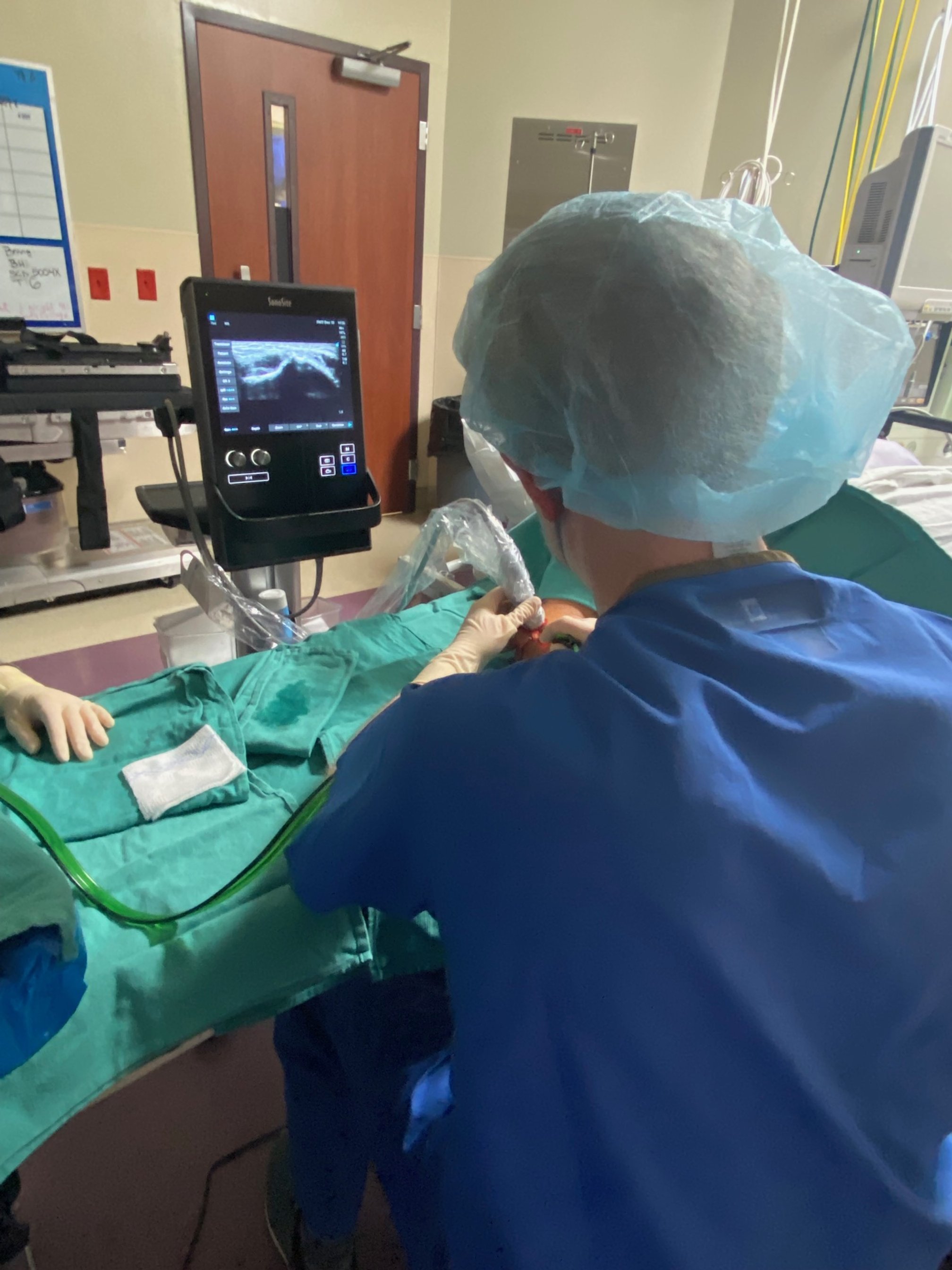Do I Need a Knee Replacement?
/Your 55 year-old knee is hurting and your brain immediately asks the question, “Do I need a knee replacement?”
An x-ray demonstrates moderate to severe osteoarthritis and thus, it’s time for a knee replacement, right? Not necessarily. It’s amazing how many patients have severe findings on their x-rays but minimal to mild pain and excellent function. Therefore, we always say, “Treat the patient, not the x-ray.”
Ok, now your pain has been running 5-7 out of 10 for weeks to months. Therefore, it’s time for a knee replacement, right? Well, pain is certainly a factor in this decision; however, we have many nonsurgical tools in the toolbox that will reduce or eliminate pain for extended periods of time.
Finally, you’ve been episodically limping now for several weeks. You suppose it’s time for a replacement, right? Persistent dysfunction is another reason to have a knee replacement, but function can often be significantly improved without the need for surgery.
To overcome the symptoms and dysfunction of knee arthritis, three factors can be addressed: the environment, the biomechanics and the structure. Only surgery can change the structure, yet significant improvements in the environment and biomechanics can often delay or eliminate the need for knee replacement.
How do we do this? The environment is best changed by injections such as platelet-rich plasma, an anti-inflammatory pattern of eating, supplements and occasionally medications.
The biomechanics can be improved through physical therapy, certain forms of exercise, bracing and changes in footwear.
So in summary, knee replacement can be the right option for many patients and produce successful outcomes in most patients, yet in 80-90% of the patients that walk (or limp) into our office, nonsurgical treatment will be quite effective.
As always, let us know if we can be of assistance to you!
F. Clarke Holmes, M.D.
I Don't Want Surgery But What Else Can I Do?
/Fortunately, 90% of problems that come into an orthopedic clinic do not require surgery.
Approximately 80% of those conditions treated nonsurgically can be treated with traditional treatment measures: rest, activity modification, physical therapy, medications, supplements, lifestyle changes, brace, splint, a boot walker, steroid injection, etc. This is “bread and butter“ treatment administered by an orthopedic/sports medicine physician.
Now, what about that last 20% of non-surgical treatment? That’s often where we have to think “outside the box.” Let’s say in the case of osteoarthritis and tendon problems, that’s where treatment like platelet-rich plasma (PRP) injections can be very helpful. For example, in the case of knee osteoarthritis, how would you like to have less pain, less stiffness, less swelling and better function? What if we could accomplish that with a treatment that is minimally-invasive, safe, proven and natural? As a bonus, this treatment has preventative benefits, meaning we likely are slowing down the cartilage breakdown in your knee. These are the benefits seen with PRP injections.
In the case of tendon or fascia problem like a rotator cuff partial tear, tennis or golfer’s elbow or plantar fasciitis, PRP is designed to be a healing agent. We are using these growth-factor rich injections to accomplish healing, not just make you feel better like a steroid injection might.
Check out a few of our previous blogs, and let us know if we can help you!
https://www.impactsportsnashville.com/blog/2023/12/8/prp-the-gift-of-health
https://www.impactsportsnashville.com/blog/2023/9/23/5-things-you-have-to-know-if-you-have-knee-pain
https://www.impactsportsnashville.com/blog/2023/8/5/our-top-5-treatments-for-knee-oa
F. Clarke Holmes, M.D.
TENex Gets a 10!
/Are you looking for permanent relief from tennis or golfer’s elbow? Are you tired of having elbow and forearm pain with lifting, gripping and grabbing, even with items like your phone or coffee mug? Are your workouts in the gym or tennis or golf severely hampered by these symptoms? Well, then look no further than the Tenex procedure. This is an innovative minimally invasive procedure developed 13 years ago in conjunction with the renowned Mayo Clinic. Dr. Holmes has performed more Tenex procedures than any other physician in middle Tennessee over the past 10 years.
The Tenex procedure, also termed a percutaneous tenotomy, is a great option for tennis or golfer’s elbow (also known as lateral or medial epicondylitis, respectively) that has not healed with rest and other possible treatments such as medications, physical therapy, injections, or bracing.
We go to the operating room, give the patient an injection of lidocaine only, a numbing agent. We get to avoid the sedation, cost and side effects of general anesthesia (getting put to sleep).
A tiny incision of about 1/4 inch is made. A small hand piece with a needle tip is inserted through the incision. Under ultrasound-guidance, this tip is inserted to the damaged part of the tendon and ultrasonic energy allows the tip to debride and remove the unhealthy portion of the tendon while leaving the healthy portion alone. Two minutes of treatment time or less and you are on the road to recovery.
No stitches required, just a few small steri-strips, followed by a small dressing and you are out the door, headed towards tendon healing, and eventually becoming pain-free.
Post-operatively, you wear a wrist splint for at least 2 weeks, and we restrict lifting for about 6 weeks. Our golfers, tennis players and weightlifters can usually gradually resume these activities at the 3-month mark. There is no “quick fix” for these conditions, yet Tenex offers a permanent solution to an often-stubborn problem.
We’ve done in the range of 500 of these procedures over the past 11 years with excellent results.
This procedure really beats the option of steroid injections, which often make the condition worse in the long term. The alternative to Tenex is a larger surgery requiring a 2-inch incision and a much longer recovery.
In our book, the Tenex procedure gets a rating of 10!


